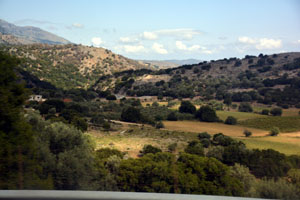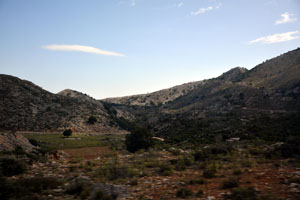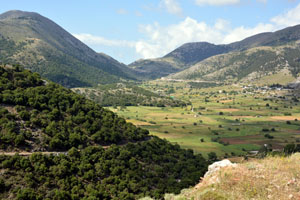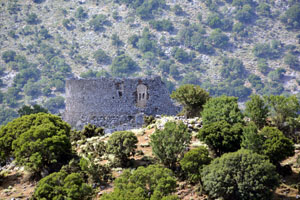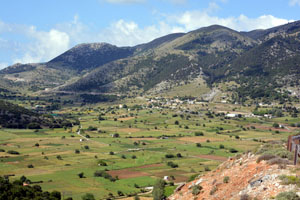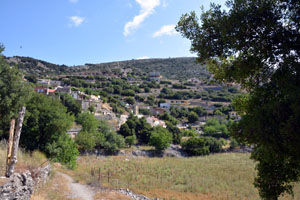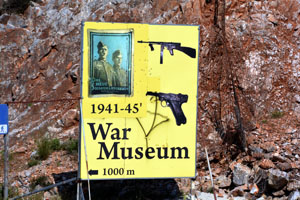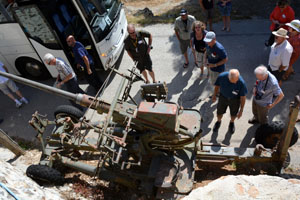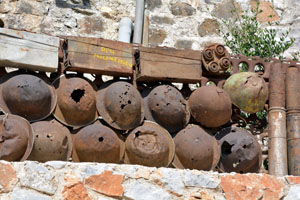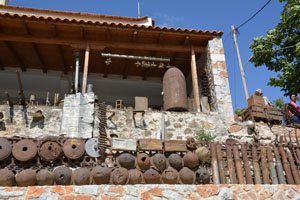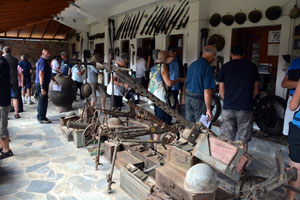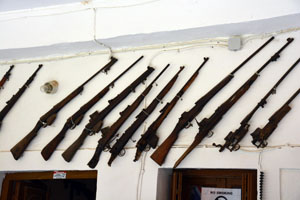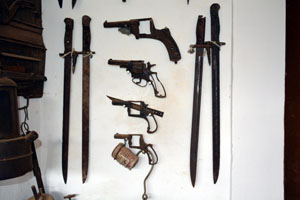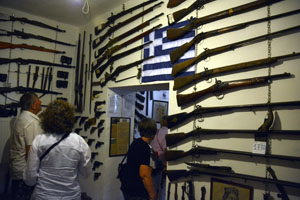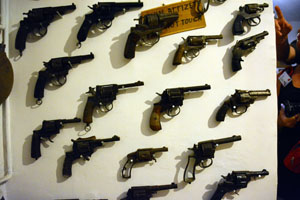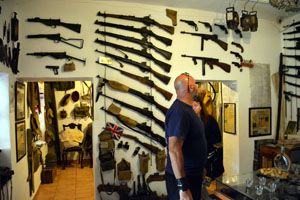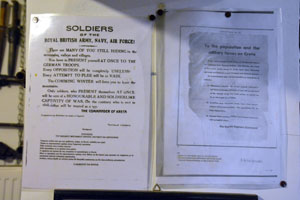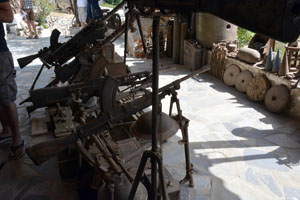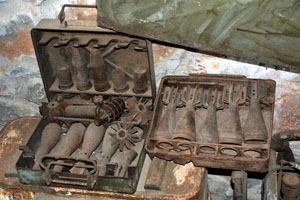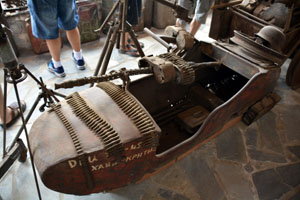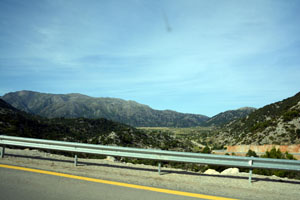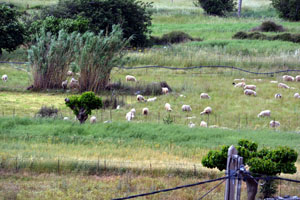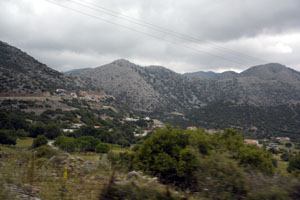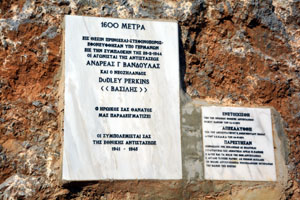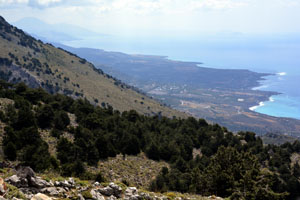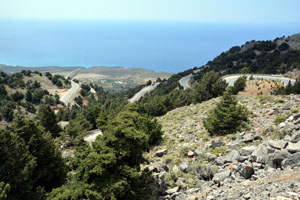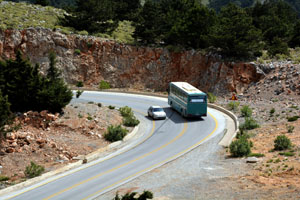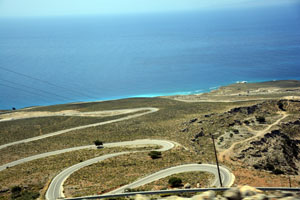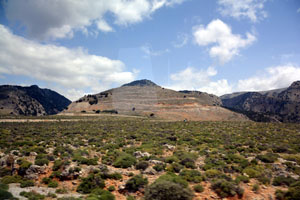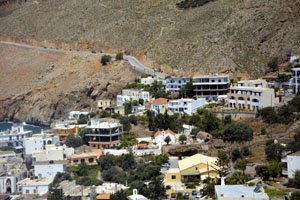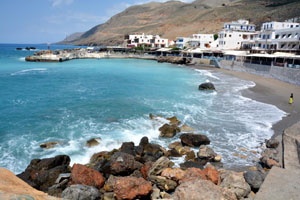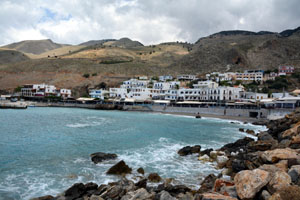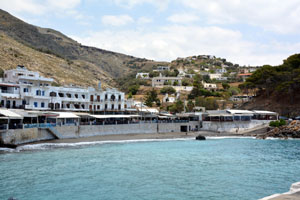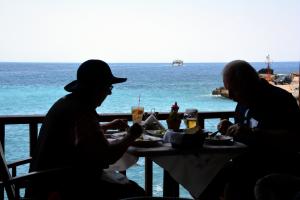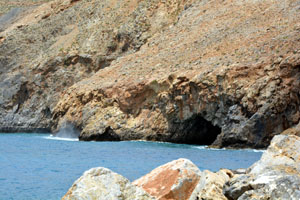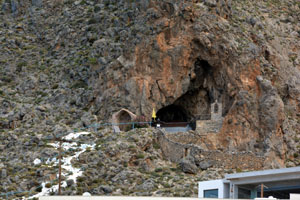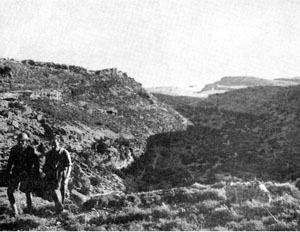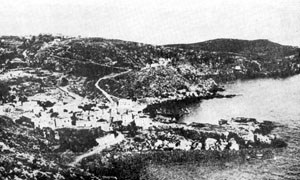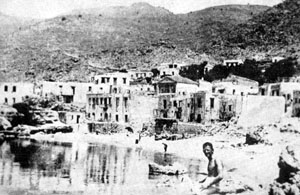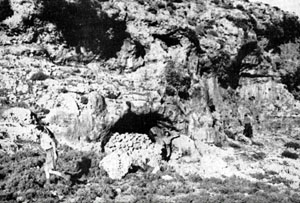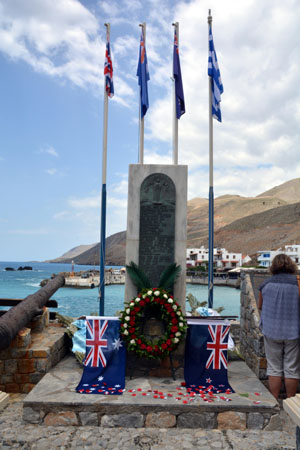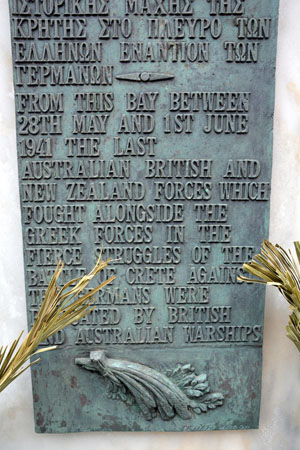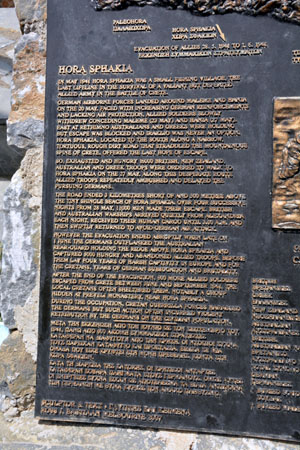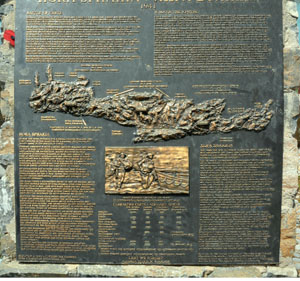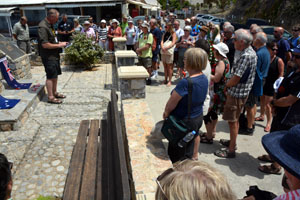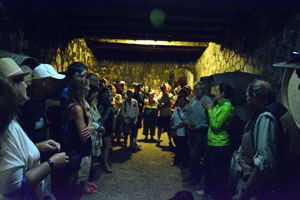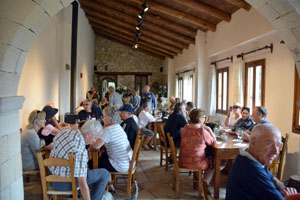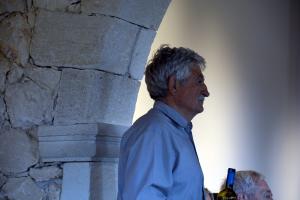Crete Pilgrimage 2016 - Day 31Across the White Mountains to SfakiaThe White Mountains form an impressive barrier running west-east along the centre of western Crete. They are predominantly limestone, and snow-covered in winter, hence the origin of the name. The highest summit is 2,453m and much of the mountain range is over 2,000 metres. The mountains are dotted with caves and cut by deep narrow gorges. In 1941 they made good hiding places for the Allied troops who were either left behind or who escaped German capture. By 28th May 1941 Freyberg had decided that Crete was lost and he was given permission to withdraw across the White Mountains to Sfakia on the south coast from where the Allied forces would be evacuated by the Royal Navy (again!). The road, such as it was, climbed up to a pass at about 1,000 metres and then on to the Askifou Plateau where the men assembled before scrambling the last section down the hillside to the small beach at Sfakia. The modern road follows the same route, but it is a sealed highway and today is full of tourist buses taking people to and from Samaria Gorge. Askifou Plateau and the War MuseumWe followed the road across the White Mountains to the plateau of Askifou and the village of Ammoudari. We stopped here to look at the view across the valley then descended to the village where a local family has built up a collection of war relics. It was a strangely eclectic collection of German, British and American equipment. I was not al all convinced that all of the munitions had been rendered safe... White Mountains and Dudley PerkinsFrom the Askifou Plateau we continued south, passing more small villages. Near the top of the pass there is a small marble memorial to a New Zealander, Dudley Perkins. Perkins was a gunner with the New Zealand 4th Field Regiment. He was captured during the retreat to Sfakia but escaped and hid in the mountains for a year. After being evacuated to Egypt he volunteered to return to Crete to help find and evacuate the remaining Allied soldiers and to help organise the Cretan resistance. He becamse known as "Vasili - The Lion of Crete". Perkins was eventually caught in a German ambush and died in the mountains. His body was buried locally but much later it was removed to the main cemetery at Suda Bay.
Over the mountains to SfakiaIn 1941 the track over the mountains stopped at the top of the last ridge before the descent to the coast. From there the men had to follow shepherds' tracks down to Sfakia. Today there is a highway, pushed through to Sfakia as part of the access route to the UNESCO World Heritage-listed Samaria Gorge. The last part of the road snakes its way down the steep hill - it is a major engineering triumph. Once we reached Sfakia we spent some time at the memorial to the men who arrived here and who were either evacuated or left behind.
Last updated: 12/06/2017 |
||||||||||||||||||||||||||||||||||||||||||||||||||||||||||||||||||||||||||||||||||
